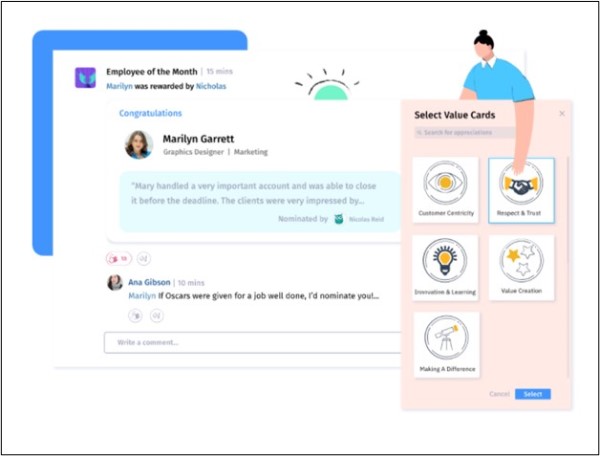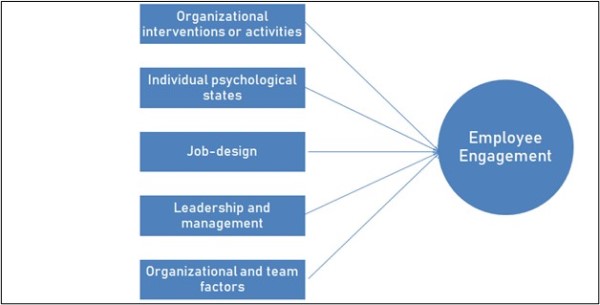Why transparency and openness are critical to reward strategy – and how to achieve it

You see, every employee loves a raise, but what they love more is knowing precisely what it takes to get a raise so that they can earn one.
Unfortunately, many companies still do not have a transparent reward strategy, which leads to frustration and resentment among employees who suspect that favouritism, not talent, is the secret. It can even cause them to leave a good organisation.
If you want to clear away the fog surrounding your reward policies and earn trust from your employees, deploying a transparent reward system is a must.
Why do we need a transparent reward system?
Employees appreciate a company being open about its rewards policy and explaining precisely what someone needs to do to make a bonus.
By not disclosing these things, a company runs the risk of creating the impression that the rewards process is based on criteria other than talent and performance. This can demotivate your employees, or worse, propel them to carry favour with managers and senior leaders in the hopes of getting bonuses, even if their performance does not call for it, which in turn, will frustrate employees who have performed well but have not been rewarded.
Moreover, transparency does not just have to be an internal policy. Companies should be open with the general public about what it takes to earn rewards and how leaders value talent and experience.
This level of transparency will help them establish a reputation for themselves as a place where good employees can succeed.
Here are four ways to incorporate transparent and open reward strategies:
1. Recognise employees publicly
A misconception that often circulates is the notion that sharing information about the raises and bonuses other people receive might make some employees demotivated and even jealous.
It is not wrong to assume that. Humans are social animals and they want to be heard and seen on the basis of their individual identities, especially when they are doing a good job. Therefore, instead of keeping bonuses hush-hush, have a periodic forum where you celebrate the people who did well and highlight exactly what they earned and why.

By putting names and faces to rewards, you are not only appealing to the reward-loving side of your employees, but also the side that loves to be in the limelight.
You can promote the achievements of team members on social media, doing an email newsletter and giving shoutouts on the company’s intranet to give them the company-wide recognition they deserve. According to a 2019 poll by SurveyMonkey, 63% of people who are “always” or “usually” recognised at work consider themselves “very unlikely” to seek a new job in the next 3-6 months. By reducing anonymity, you are reducing your employee attrition rate.
2. Open the floor for ideas
Employees want to be heard, not just when they feel unsafe, uncertain or stressed, but also when they are brimming with ideas that can benefit a process, a project and even an entire department.
Your company needs to be one where creativity and initiative are encouraged. Your next significant initiative could come from an idea your employee shares, and they need to have an environment where they feel safe about sharing.
There could be brainstorming sessions specifically for new ideas or an online rewards platform that invites anyone to share ideas at any time. You can implement a social intranet platform to help you keep track of all ideas and participants. In particular, have a bonus set aside for creative ideas so that employees can be suitably appreciated for their initiative.
By simply opening the floor for ideas and opinions on an informal yet official platform, you can gain meaningful insights – far better than surveying. Rewards are the icing on the cake when it comes to employee engagement.
3. Promote a larger purpose
Your employees are all doing tasks that are important to the company's growth, but do they know precisely why their specific roles are important?
BetterUp’s Meaning and Purpose at Work report (2018) found that more than nine out of 10 employees would willingly trade a portion of their lifetime earnings for greater meaning at work.
Remember, merely preaching your vision and mission statements at team meetings is not enough. It would be best if you created a larger purpose. You must reinforce it at a ground level to feel like they are an essential part of the mission. That way, they will know better how they can contribute to the mission and how they will be rewarded for it.

Companies that have an engaged workforce are 21% more profitable than those which are not, according to findings from Gallup in 2018. In addition, 69% of employees are likely to work harder if they felt that their efforts were better appreciated, found IBM and Globoforce Limited in their The Employee Experience Index (2017) research.
4. Leverage technology for greater transparency
As a company, you need to make it easy for employees and other stakeholders to trust you when it comes to the matter of rewards and recognition. The right technology can help you spread awareness much faster and create a two-way channel for feedback and questions.
Using a rewards and recognition solution, for instance, you can share your rewards policy as a simple interactive tutorial rather than a lengthy document that people are unlikely to read.
You can also gamify the path towards rewards by having an app where employees can check how many points away they are from a specific reward. In addition, you could open a channel where employees can freely ask questions and are assured of a prompt answer.
Build a winning workplace culture by gathering employee feedback, gaining insights on how engaged they are, and setting a proper strategy for giving rewards.
Putting it all together
Ideally, you should be clear about the reward policies on your job descriptions. That way, you can attract the candidates who resonate the most with those policies. Achieving transparency in the workplace is not as hard as you think it could to be.
At the end of the day, it is about believing that your employees deserve to know the complete picture and giving them just that. Above all, celebrate every reward and bonus that comes along. Revel in the celebration of your employees.
The more open you are about reward, the more your employees will see that you value competence, and the keener they will be to demonstrate that competence in themselves. It is a win-win situation for both your employees and your organisation.
This article is provided by Xoxoday.
In partnership with Xoxoday
We offer business software products to solve problems around employee rewards&recognition.







